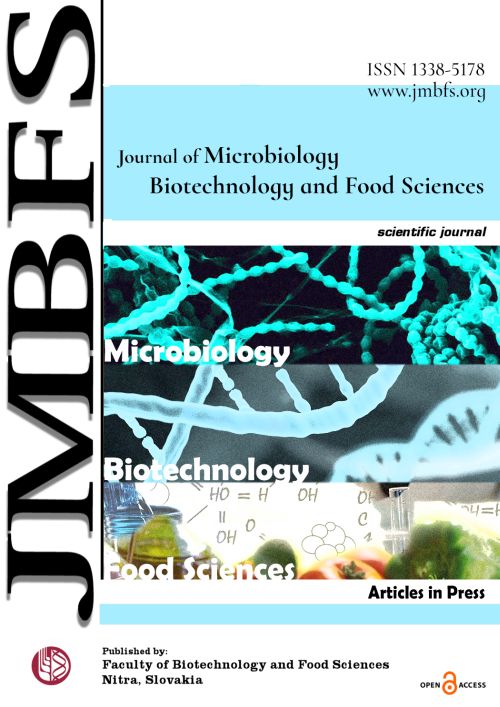MICROBIOLOGICAL AND CHEMICAL PROFILING OF LACTO-FERMENTED SHIMEJI MUSHROOM (Hypsizygus sp.) PICKLE JUICE USING Lactobacillus bulgaricus AS A STARTER CULTURE
DOI:
https://doi.org/10.55251/jmbfs.11136Keywords:
Fermentation, lactic acid bacteria Lactobacillus bulgaricus, mushroom, shimejiAbstract
Fermentation is a way to preserve food, extend its shelf life and improve its nutritional and sensory qualities.he use of probiotic strains in mushroom bio-preservation has been rarely investigated. A probiotic such as Lactobacillus bulgaricus is commonly used as a starter for fermented food and dairy products. This study evaluated the microbiological, chemical and sensory quality of the pickled juice of shimeji mushroom (Hypsizygus sp.) fermented using L. bulgaricus FNCC 0041 for 18 days and identified the volatile compounds. The microbiological profiles of lactic acid bacteria (LABs), yeast, molds and Enterobacteriaceae in the pickle juice were determined through plate counting, and the chemical profile was determined by analysing total titratable acidity, pH, nitrite content, and volatile compounds. Moreover, the sensory characteristics of the final products were evaluated according to colour, texture, aroma and overall appearance. Results showed that LABsere dominant in the mushroom pickle juice, whereas yeast and Enterobacteriaceae decreased but exceeded the microbiological quality limit. The pH of the fermented shimeji mushroom was 3.72, and the total lactic acid content increased from 0.18% to 0.32%. The nitrite concentrations of the final products decreased and were lower than the maximum limit for nitrite content in fermented food (0.42 mg/kg) on the last day of fermentation. Aromatic hydrocarbons, alkanes, alkenes, alcohols, organic acids, ketones, aldehydes, and fatty acids, such as o-xylene (27.880%), p-xylene (5.890%), styrene (0.56%), and mesitylene (0.23%), were found as major volatile compounds. The sensory characteristics of fermented shimeji were acceptable. The study suggests that fermentation using L. bulgaricus can be further developed into a bio-preservation method for preserving shimeji mushrooms.
Downloads
Downloads
Published
How to Cite
Issue
Section
License
Copyright (c) 2023 Avila Kusuma W, Sari Darmasiwi

This work is licensed under a Creative Commons Attribution 4.0 International License.
All papers published in the Journal of Microbiology, Biotechnology and Food Sciences are published under a CC-BY licence (CC-BY 4.0). Published materials can be shared (copy and redistribute the material in any medium or format) and adapted (remix, transform, and build upon the material for any purpose, even commercially) with specifying the author(s).





